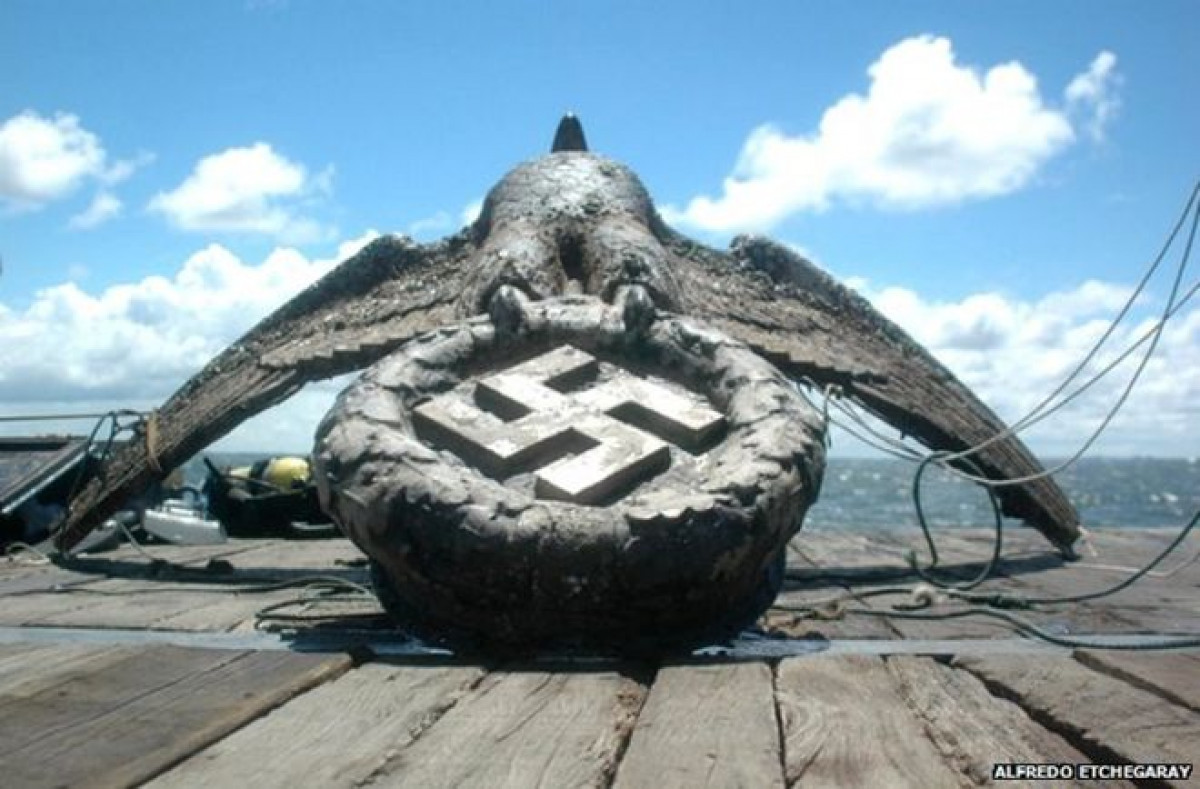Americas
Nazi symbol in Uruguay should go to museum: US research centre
Its value is estimated to be around $26m.

A massive bronze eagle perched on a swastika will soon be auctioned in Uruguay. However, a US-based Holocaust research institute has urged Uruguay to give it to an educational institution or a museum.
The Simon Wiesenthal Center, Los Angeles has appealed to the country to take care so that the insignia does not fall in the hands of white supremacists. The eagle weighing around 350-400 kgs was recovered from a German battleship engaged in World War II. Its value is estimated to be around $26m, said a BBC report.
This is the latest twist to the history of the dubious object, which was the most visible symbol of Third Reich headed by Adolf Hitler. Private investors retrieved it from the sea within Uruguay’s jurisdiction in 2006.
The Graf Spee was sunk in the sea near the country’s capital, Montevideo in 1939. The sculpture owned by the Uruguayan government after a long legal battle over its ownership lies in a godown. The Uruguayan Supreme Court ruled in 2014 that in the case of its auction, profits should be divided between the government and the private firms salvaging it and paying for its retrieval. A court last year allowed the eagle to be sold off.
According to BBC, the Simon Wiesenthal Center has pleaded Uruguay to ensure that the object serves "as a warning to future generations".
"Both the German authorities and the Wiesenthal Center have taken the position that such artefacts cannot serve a growing extreme right market and white supremacists," said Dr Shimon Samuels of the Wiesenthal Center in a press release.
The centre also mentioned an alleged interest shown by an investor who intended to install the eagle as a centrepiece at the 2020 Fifa World Cup in Qatar. The Wiesenthal Center said buyers have to be cautioned against using Nazi symbols of ethnic cleansing, which are not supposed to be displayed publicly. The centre suggested that educational institutes or museums educating people on the Holocaust or other such tragedies should be given preference in the auction.
After the conclusion of the efforts of two years in 2006, the swastika was hidden under a cloth as it was taken by road to the warehouse as a mark of respect for people who could be offended.
Uruguay intended to attract tourists as the eagle was displayed in Montevideo for a short period. However, the German embassy lodged a complaint with the Uruguayan government urging it to stop displaying "Nazi paraphernalia".





